Topiary is the horticultural art of pruning shrubs and trees into specific geometric shapes like spheres, cubes, spirals, pyramid cones.
It can also refer to more complex creations like animals or objects. These understandably are created mostly with evergreens such as yew (Taxus baccata), box (Buxus sempervirens), holly (Ilex aquifolium) and privet (Ligustrum japonicum).
You will likely have been fortunate enough to have seen many examples on our own doorstep.
The beautifully pruned obelisk yews that create a perfect uniformed set of parallel lines from the top garden through to the bottom garden at Pitmedden Garden for example.
The egg and saucer yews at Crathes Castle may also spring to mind.
Weeping silver pear
I’m no topiary expert by any means but I’ve had my share of topiary to deal with over the years.
Beechgrove Garden is no exception.
Here we have four yew obelisks a la Pitmedden Garden. We have a long row of hollies which have been topiarised as lollipops a la Haddo House.
A new one to me however were the weeping silver pears (Pyrus salicifolia ‘Pendula’). These gorgeous little deciduous trees (I didn’t say all topiary were evergreen) are grown for their pendulous shape, as the cultivar suggests.
They have brilliant silver foliage but the fruit is not edible in the same sense as the typical common pear (Pyrus communis) we know and love to eat.
Pruning these can be done in a number of ways but being new this year to Beechgrove Garden means I’ve adopted them as they’ve been pruned in the past.
I must say that despite the fact it looks a bit like mum has taken the salad bowl and scissors out on a Sunday before school; I actually love the shape.
It looks like a mushroom. They stand glistening in the garden, both sticking out like a sore thumb but somehow also blending in perfectly.
A bit like a brightly dressed and awkward looking parent at kids’ birthday party you’ve been dragged to.
Pruning now while the weather is still very mild means ample time for the wounds to heal over before we worry about the winter kicks in and silverleaf disease becomes an issue.
Niwaki
Well since we are on the topic of fancy pruning it would be prudent to mention the black pines (Pinus nigra) we have that are cloud pruned and Niwaki pruned respectively.
The Japanese art of cloud pruning is well known the world over. We have an absolutely cracking example of one in the low maintenance garden over at Beechgrove Garden.
The rounded balls are carefully pruned to keep the selected stems of needles spherical yet touching at key points to give the continuous folds and weaves that makes for that famous cloud outline.
Niwaki is the Japanese word for ‘Garden Tree’. It simply refers to keeping select tree types e.g. pruned in a way which fits the scale and feel of a typical Japanese garden.
I was fortunate enough to spend a couple of days with two Japanese gardening experts many moons again when I worked at Duthie Park.
The often missed Japanese Garden which lies smack bang in the middle of the David Welsh Winter Gardens (outside next to the Cactus house) features such Niwaki pruned trees.
The two gentlemen came in and showed us how it was done. It really is an art form. There is no hard and fast rule as such, it is all about feel.
In order to help us along they did explain that balance is achieved by following a 70%-30% balance of branches on each side of the tree.
The next tree may have a 60%-40% balance of branches with the 60% facing the previous trees 30%. The trees should flow and move like water.
The important thing was to create an interesting but balanced scaffold of stems from which the needles could maintained.
At Beechgrove the black pines were getting a little on the large side which was breaking one of the golden rules: scale!
As such it was overdue a trim back to recover that important Japanese essence.
The prominent upright buds at the tips of the branch are called ‘candles’. In spring these are carefully selected to be removed to keep the tree in shape.
This time of year the woody parts and overall larger scale decision for shaping are made.
At home
Back in my own garden I was caught up a little in topiary fever and decided to prune one of the golden fastigiate yews (Taxus baccata ‘Fastigiata Aurea’) with a spiral pattern.
I actually like it so much I might do the rest the same. Here’s hoping I don’t regret giving myself extra work.
Take care and happy gardening.
Yew obelisks
Yew obelisks and lollipop hollies behind.
Smaller weeping pear after pruning
Niwaki pines
Lollipop hollies
Cloud pruned pines
Before pruning the large weeping pear
After pruning the large weeping pear
The Japanese art of cloud pruning where the rounded balls touch at points to give continuous folds, like a cloud.
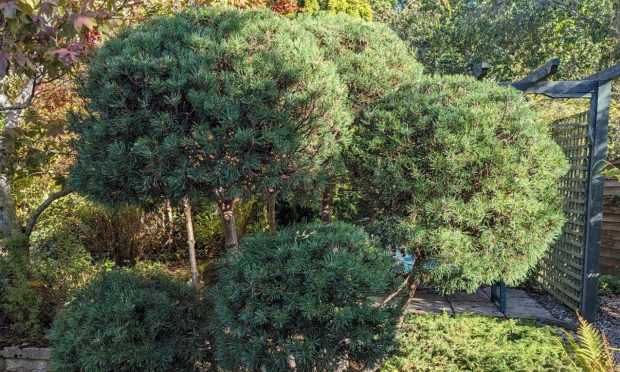
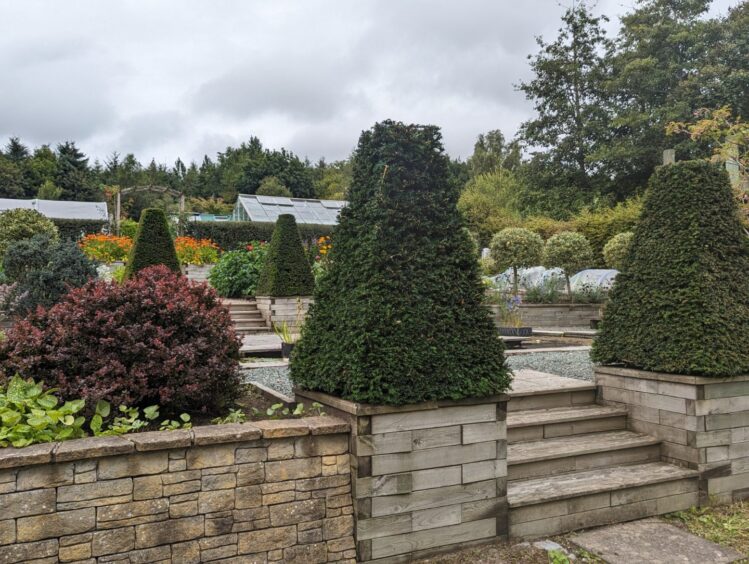
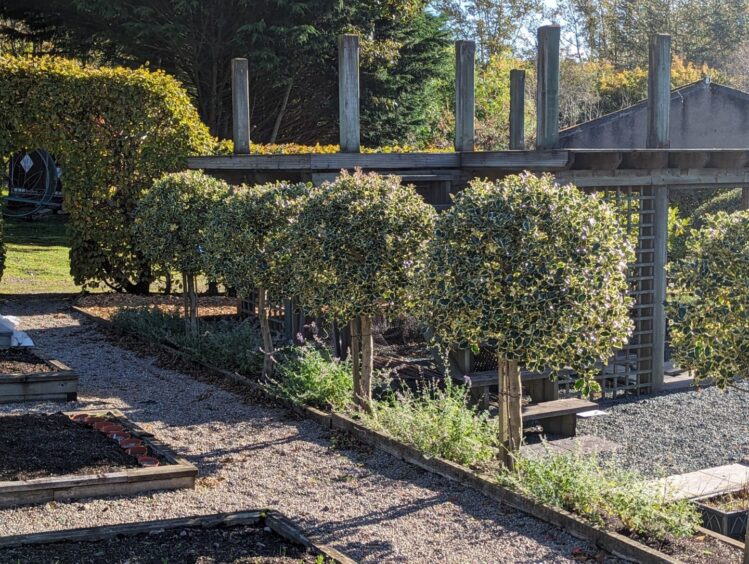

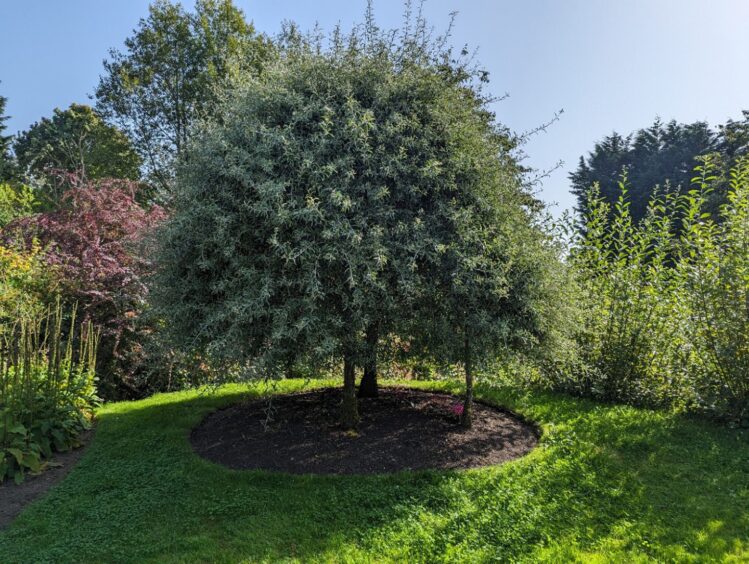
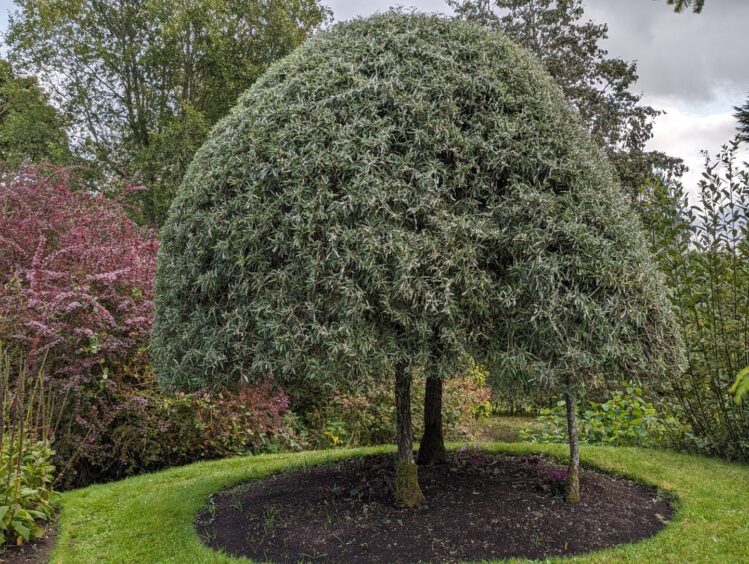
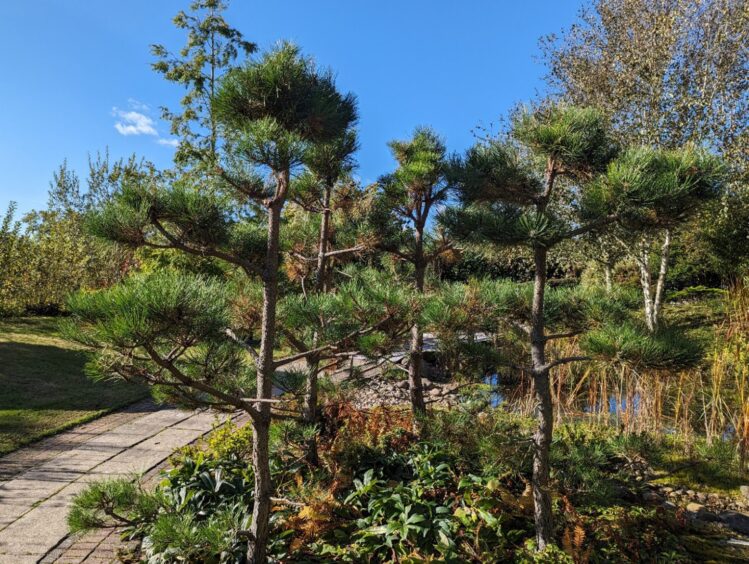

Conversation